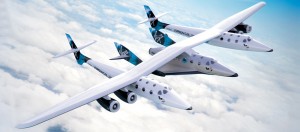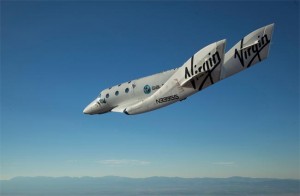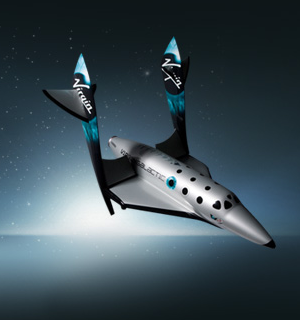Virgin Galactic, the world’s first commercial spaceline, announced today that its vehicle developer, Scaled Composites (Scaled), has been granted an experimental launch permit from the Federal Aviation Administration (FAA) for its suborbital spacecraft, SpaceshipTwo, and the carrier aircraft, WhiteKnightTwo.
 “This important milestone enables our team to progress to the rocket-powered phase of test flight, bringing us a major step closer to bringing our customers to space,” said George Whitesides, president and CEO of Virgin Galactic. “We thank the FAA for their timely issuance of this permit, and for their responsible oversight of the test program.”
“This important milestone enables our team to progress to the rocket-powered phase of test flight, bringing us a major step closer to bringing our customers to space,” said George Whitesides, president and CEO of Virgin Galactic. “We thank the FAA for their timely issuance of this permit, and for their responsible oversight of the test program.”
Already, SpaceShipTwo and WhiteKnightTwo have made significant progress in their flight test program. With 80 test flights completed, WhiteKnightTwo is substantially through its test plan, while the more recently constructed SpaceShipTwo has safely completed sixteen free flights, including three that tested the vehicle’s unique “feathering” re-entry system. Additionally, ten test firings of the full scale SpaceShipTwo rocket motor, including full duration burns, have been safely and successfully completed.
With this permit now in hand, Scaled is now authorized to press onward towards rocket-powered test flights. In preparation for those powered flights, SpaceShipTwo will soon return to flight, testing the aerodynamic performance of the spacecraft with the full weight of the rocket motor system on board. Integration of key rocket motor components, already begun during a now-concluding period of downtime for routine maintenance, will continue into the autumn. Scaled expects to begin rocket powered, supersonic flights under the just-issued experimental permit toward the end of the year.
already begun during a now-concluding period of downtime for routine maintenance, will continue into the autumn. Scaled expects to begin rocket powered, supersonic flights under the just-issued experimental permit toward the end of the year.
“The Spaceship program is making steady progress, and we are all looking forward to lighting the vehicle’s rocket engine in flight for the first time,” said Doug Shane, president of Scaled.
Although a handful of experimental launch permits have been granted to other rockets, SpaceShipTwo is the first rocket-powered vehicle that carries humans on board to receive such a permit. SpaceShipOne, the manned spaceship successfully flown to space in 2004 and the basis for the design of SpaceShipTwo, flew before the Experimental Permit regulatory regime was established.
The FAA’s Office of Commercial Space Transportation issues permits after it has determined that the vehicle operator has taken the appropriate steps to protect the public during testing. Permitees must submit detailed plans for vehicle design and operation in order to ensure that all possible scenarios have been addressed.

